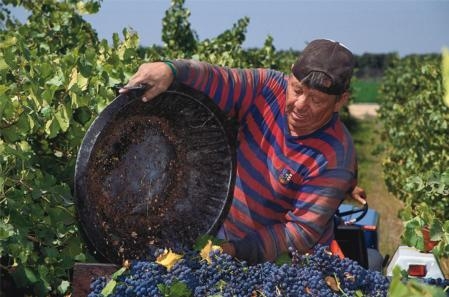Growing concern about social issues related to agriculture – working conditions for laborers and environmental impacts, for example – is giving rise to consumer and retailer interest in buying products that were farmed using “sustainable” methods.
“Sustainable agriculture” is not easy to define. In general, the system puts an emphasis on practices that have long-term environmental and social benefits – such as reducing pollution and providing stable jobs. Sustainable products are perhaps not as familiar as “organic,” but examples of retailers capitalizing on the concept are numerous.
- Walmart is training 1 million farmers and workers worldwide on crop selection and sustainable-farming practices
- Sysco asserts online that it offers products that come from suppliers that take care of the land
- Del Monte Foods formalized its environmental goals in three key areas - waste, greenhouse gas emissions and water
Understanding farmers’ perceptions about adopting sustainable farming is a goal of research by Mark Lubell, professor of environmental science and policy at UC Davis. To document whether winegrape farmers and other experts believe the environmental and economic benefits of adopting sustainable practices are worth the cost, Lubell analyzed data from three sources: a survey of viticulture outreach professionals, including UC farm advisors, campus-based researchers and vineyard management consultants; a 2008 survey of winegrape growers who are part of the California Sustainable Winegrowing Alliance’s Sustainable Winegrowing Program; and 16 interviews with winegrape growers in the Lodi, Napa Valley and Central Coast winegrowing regions.
Many “sustainable” practices were perceived to have economic benefits and are likely to be adopted by growers, Lubbell found. Of the practices where economic benefits outweigh the costs, the practices with the highest environmental benefits are perceived to be:
- Spot spraying for pest problems instead of treating entire vineyards
- Pheromones to disrupt pest mating
- Computer models for disease forecasting
- Dust reduction with cover crops
- Monitoring evapo-transpiration to determine when to irrigate
“Important challenges to the adoption of sustainable practices arise when economic benefits are low and when growers have uncertainty about benefits,” Lubell said.
The take-home message for advisors and crop consultants: Outreach programs should focus grower education on activities with both economic and environmental benefits. Reducing uncertainty should be a primary goal of all outreach programs and requires research to demonstrate the effectiveness of agricultural practices.
Lubell believes adopting sustainable methods makes sense for winegrape growers.
“The market for sustainability is not mature enough now to get a price differentiation,” he said. “But a ‘green’ market is emerging. Some people are willing to pay for it and more will pay over time.”
For more information, read the research brief The Perceived Benefits and Costs of Sustainability Practices in California Viticulture.
Attached Images:
